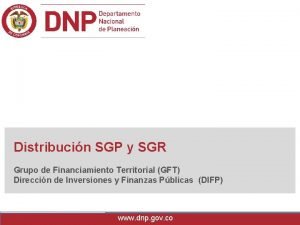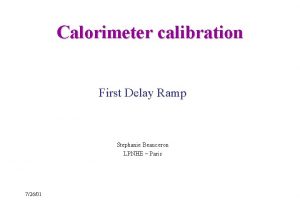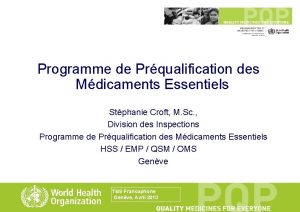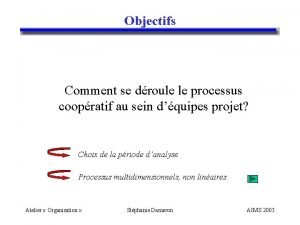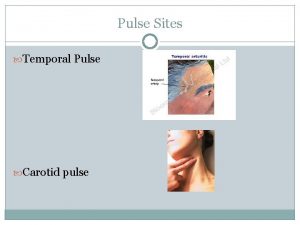PULSE Stephanie Oliver DNP RN It is an







- Slides: 7

PULSE Stephanie Oliver, DNP, RN

• It is an indicator of circulatory status • The normal pulse varies according to age § Infants § Preschoolers § School age § Adolescent § Adult 100 -160 80 -110 70 -100 60 -90 60 -100 • The pulse is a palpable bounding of blood flow noted at various points on the body (pressure of the blood pushing against the walls of an ARTERY).

PULSE POINTS • Temporal • Carotid • Apical • Brachial • Radial • Ulnar • Femoral • Popliteal • Posterior Tibial • Dorsalis Pedis

PULSE CHARACTER Rate § Number of beats per minute (60 -100) Rhythm § Interval between contractions of ventricles (regular, irregular) Strength § Volume of blood ejected against the arterial wall graded as strong, weak, thready, bounding Equality § Are pulses the same on both sides of the body

COUNTING THE PULSE • Radial is most logical spot: pt sitting or lying down two fingers over radial pulse compress gently determine strength note sweep hand on watch determine start number begin count regular pulse, , count 30 sec multiply by 2 **irregular pulse…count for full minute

APICAL PULSE (PMI) • Point of maximal impulse is located midline fifth intercostal space midclavicular line

COUNTING THE APICAL PULSE • Use on infants, patients with heart failure, abnormally fast heartbeat, some meds require the apical pulse to be checked before administering • When pulse is irregular it may be necessary to determine the pulse-deficit: § This requires two nurses § One to count the radial pulse one to count the apical pulse (pulse at apex of heart) § This is done at the same time § Subtract the radial pulse from the apical (example: radial = 96, apical =100, pulse deficit = 4) § If radial pulse is higher than the apical pulse, do the assessment again, it is not possible

